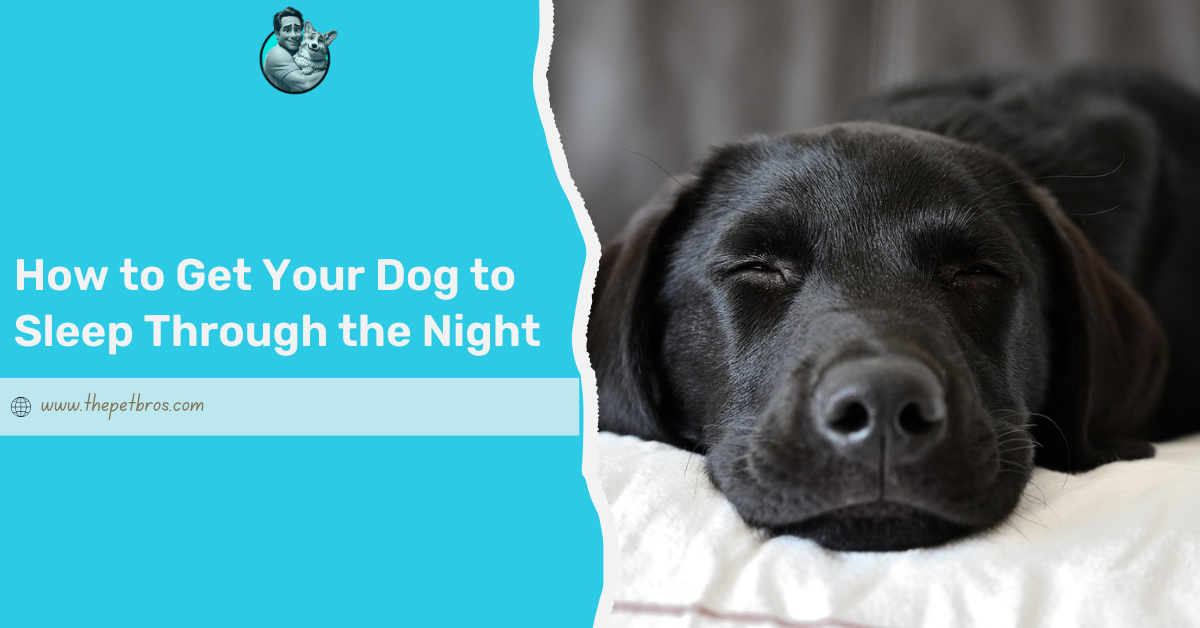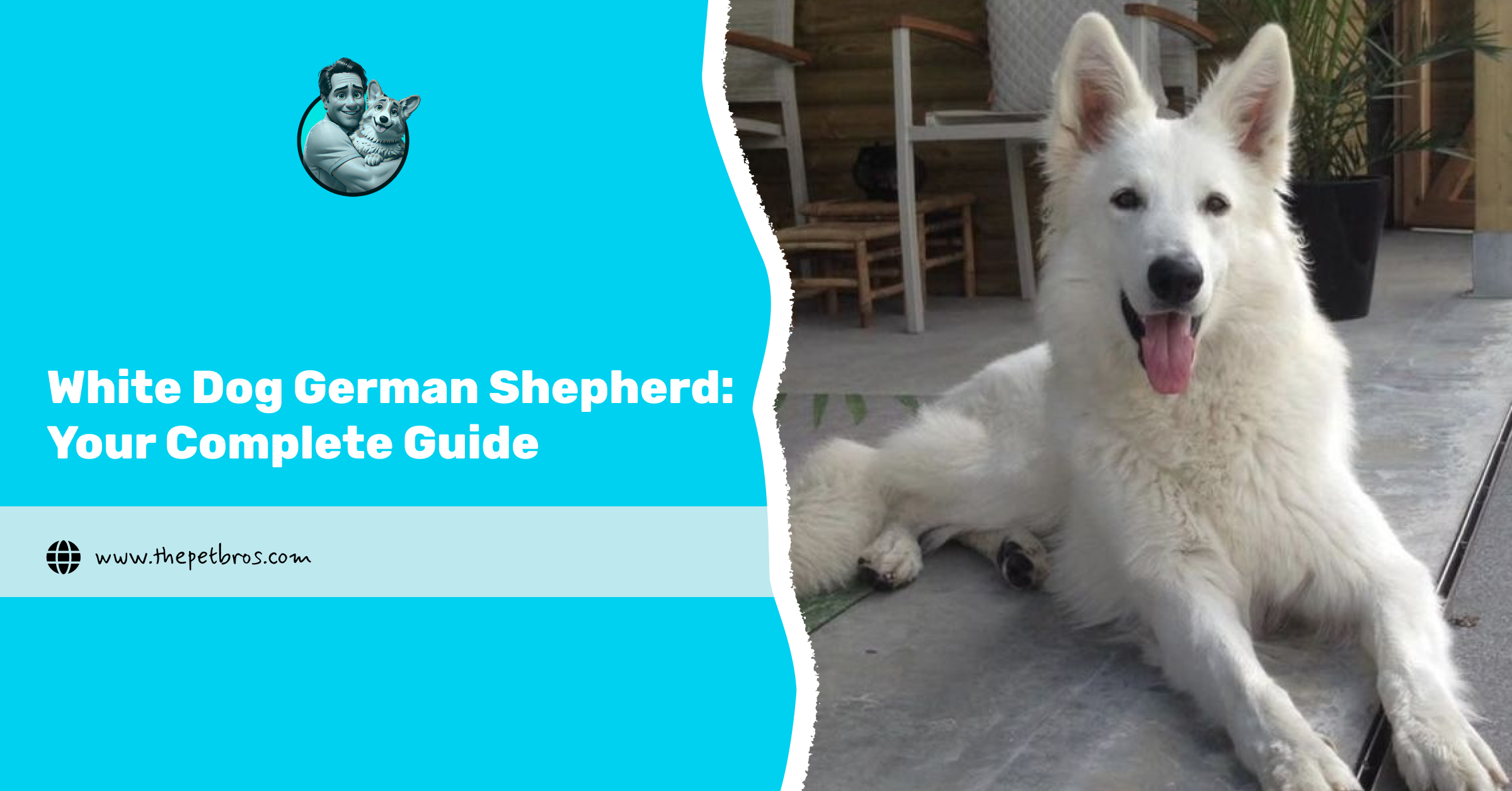Understanding how to get your dog to sleep through the night can be one of the most challenging parts of being a pet parent. You may be dealing with a puppy still learning the ropes or an older dog who seems to wake up at every little sound; whichever one you’re battling, getting your dog to sleep through the night can feel like a constant struggle.
It’s easy to get frustrated when your sleep is interrupted, and it might feel like nothing is working. The good news is, you’re not alone, and there are solutions. With a bit of consistency and the right approach, you can help your dog adjust their habits and get a full night’s rest.
Stay with us, as in this article, we’ll guide you through strategies and simple tips to make bedtime a peaceful experience for both you and your dog. Whether it’s creating a bedtime routine, providing them with enough exercise, or setting up the ideal sleeping environment, you can help your dog sleep soundly.
Best 10 Ways to Get Your Dog to Sleep Through the Night
1. Set Up a Consistent Routine
Dogs are creatures of habit, and there’s nothing more comforting for them than a day that follows a familiar pattern. When you establish a routine, such as going for walks, giving them meals, or taking them to bed at a particular time each day, it helps your dog understand when it’s time to settle down.
A set routine also helps regulate your dog’s bathroom schedule, reduces the chances of midnight wake-up calls, and makes it easier for everyone in the house to get a good night’s rest. Even if you get an unusual day, where some trouble at work made you get home late, still try to stick to the basics.
Being this predictable signals to your dog’s natural body clock when to wind down and when to get ready for sleep. If you continue on this path, eventually you won’t have to worry about them sleeping at the right time; they will become naturally accustomed to that routine.
2. Make Sure Your Dog Takes a Bathroom Break
Nothing interrupts a good night’s sleep like a dog who suddenly needs to go outside at two in the morning. The simplest way to avoid this is to always let your dog out for a bathroom break just before bedtime.
You can do this by ensuring that you take them on a short walk or lead them to their usual pee spot in the garden, giving them the chance to empty their bladder before everyone turns in. This habit will make a significant difference in your dog’s life.
Not only does it reduce the risk of overnight accidents, but it also helps you communicate to your dog that the day is coming to an end and it’s time to settle down. If your dog is either a puppy or an older dog, both of which have smaller bladders, then you should know that this step is even more important.
3. Give Your Dog Enough Exercise and Mental Stimulation
A tired dog is a sleepy dog. Ensuring your dog gets enough exercise during the day is one good step to helping your dog sleep through the night. Long walks, playtime in the garden, and interactive games all help burn off excess energy that can keep your dog restless when it is bedtime.
Mental stimulation matters just as much as physical exercise. Introduce your dog to puzzle toys or training sessions that challenge your dog’s mind as well as their body. An example of these activities includes hide-and-seek with treats; you can even prioritise teaching them new tricks, which will help keep your dog engaged and satisfied. When both their body and brain are tired, your dog will be much more likely to settle down and sleep right through the night.
4. Offer a Chew Toy Before Bed
Sometimes, the best way to help your dog sleep for the night is to let them take their time playing with a favourite chew toy. Chewing, for your dog, is a soothing activity that releases calming endorphins, helping to put your dog in a relaxed state before bedtime.
For dogs that tend to become anxious or restless in the evenings, this small step can help them relax their bodies and minds. Choose a safe toy designed for nighttime use, such as rubber chews, soft plush toys, or a Kong filled with a tasty treat.
When your dog finally gets used to chewing as part of their bedtime ritual, get ready because you’re much more likely to enjoy a quiet, undisturbed night yourself.
5. Keep Your Dog in a Separate Bed
Trust us, we know it is tempting to let your dog share your bed, especially if they’re already used to snuggling up next to you. However, giving your dog their own sleeping space can work wonders for both your sleep and theirs.
A separate bed helps your dog learn that bedtime means settling down in one spot, rather than tossing, turning, or waking you up in the middle of the night. So, choose a bed that complements your dog’s size and sleeping style, for example, some dogs love curling up, while others prefer to stretch out.
Regardless of your dog’s preferred style, ensure that you place the bed in a quiet, comfortable area of your home. You can even add an item of your clothing with your scent to help them feel secure. This way, your dog knows exactly where they’re meant to sleep; they’ll be less likely to wander, paw, or howl at your door in the middle of the night.
6. Create a Comfortable Sleeping Environment
A peaceful night’s sleep starts with the right environment. Your dog’s bed should be cosy and placed in a spot where they feel safe. Consider a location away from household noise, draughts, or bright lights, especially if your dog is easily disturbed.
A corner of your bedroom or a quiet spot in your living room is ideal, as long as you know your dog and which one they will prefer. Add soft blankets or their favourite cushion to make the bed even more inviting.
It may surprise you to know that your dog might enjoy the calming effects of background noise, such as gentle music or a white noise machine. This can either help mask outside disturbances or help them settle down when it’s bedtime.
If you observe your dog is nervous about the dark, try leaving a small nightlight on to give them reassurance. The more comfortable and secure your dog feels in their sleeping space, the easier it will be for them to relax and drift off.
7. Ensure Your Dog Is in Good Health
Sometimes, despite having a perfect routine and environment, your dog may still struggle to sleep through the night. It is essential to consider whether an underlying health issue may be at play.
A little Pain, discomfort, or even mild illnesses can interrupt your dog’s sleep and cause them to wake up or pace around the house. Regular check-ups with your vet will help you catch any potential health problems early.
If your dog has been doing great in the sleeping department but suddenly starts having trouble sleeping, a visit to the veterinarian is important to rule out any serious issues. You should also keep an eye out for signs such as excessive scratching, rapid breathing while asleep, limping, frequent trips to the water bowl, or changes in appetite; these can all hint at health issues affecting sleep.
8. Limit Evening Activities and Excitement
Regardless of the routine you’ve created, dogs can pick up on the energy in your home, so if the evening is filled with loud noises, rough play, or lots of excitement, your dog may find it harder to settle. While playtime is important, try to schedule energetic games and walks earlier in the day so your dog has time to wind down naturally.
In the hour before bed, choose calm, relaxing activities like a gentle brushing session or just sitting quietly together. This can help signal to your dog that the day is closing and it’s almost bedtime. Avoid lively games that get your dog too worked up, as this can make it harder for them to shift into sleep mode.
9. Establish a Wind-Down Routine
We’ve discussed exercise routines and play routines. Now let’s discuss a wind-down routine. A solid wind-down routine guaranteed to get your dog to sleep through the night, just as it does for humans.
When you create a predictable sequence of events, each evening that all lead to its bedtime, it helps your dog recognise when it’s time to settle down for the night. This could include a final walk, a light snack if recommended by your vet, and a bathroom break just before bed.
Try to keep this routine the same each evening, so your dog knows exactly what to expect. You might start by dimming the lights, then offer a calm cuddle or gentle massage, followed by leading your dog to their designated sleeping area. The more consistent your routine, the easier it becomes for your dog to slip into sleep mode.
Conclusion
Getting your dog to sleep through the night is a journey, not a quick fix. Even in humans, developing new habits takes time, and there may be occasional setbacks along the way. This is where you hold consistency by the hand and make sure you see this journey through.
Some dogs adjust quickly, while others might take a few weeks to settle into their new sleep pattern. Be patient with your dog. Stick to the routines and strategies you’ve put in place, even if results aren’t immediate.
FAQs
Can I use a crate to help my dog sleep through the night?
Yes, a crate provides a comfortable space for your dog to sleep, especially if they’re still learning routines.
Should I feed my dog late at night to help them sleep?
Avoid heavy meals right before bed, but a light snack might help some dogs feel satisfied enough to sleep.
Is it okay if my dog sleeps in my bed?
It’s fine for some pet owners, but co-sleeping can disrupt both your sleep and that of your pet.
Can anxiety affect my dog’s sleep?
Yes, anxiety can lead to restlessness. Try calming solutions like chew toys, relaxing music, or even consulting a vet for more serious issues.















It’s really interesting how much a routine can impact a dog’s sleep habits—I never thought it could be so crucial! I’ve been struggling with my own dog waking up at odd hours, and this article gave me some new ideas to try. Do you think it’s better to start with a strict bedtime or focus more on exercise during the day? I’ve heard mixed opinions, and I’m curious what you think. Also, what’s your take on using calming aids like treats or sprays—are they helpful or just a temporary fix? Personally, I’m a bit skeptical, but maybe I’m missing something. How do you ensure your dog’s sleeping environment is ideal—any specific tips? I’d love to hear your thoughts or experiences with this!